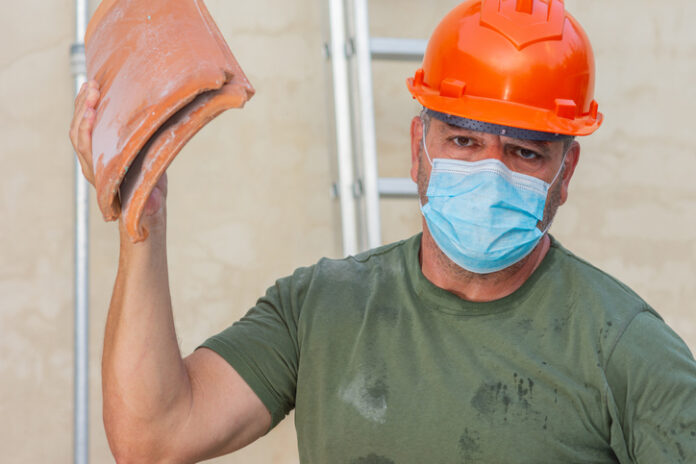Insurance underwriters are scrutinizing mask usage and whether it could lead to an increase in workers’ compensation claims.
PN Medical, which calls itself “the nation’s leader in specialty network management services for the workers’ compensation industry,” published a press release saying masks can create “workplace respiratory complications.” Employees who suffer an injury in the workplace are often eligible to file a worker’s compensation insurance, which covers medical bills, rehabilitation, and wage loss.
The consulting firm stated it has been investigating the effects of mask wearing for 8 to 10- hour days and what impact the practice could have on employee health.
“Improper breathing while wearing surgical or cloth masks has been shown to create anxiety, headaches, increased heart rate, dizziness and fatigue,” the release stated.
“We are not condemning masks,” stated Mark Carbone, CEO of PN Medical. “We realize they are a necessary tool given the current environment we live in. That said, it’s critical to educate people on how to breathe effectively while wearing them.”
Mask Not Foolproof
Prolonged use of masks can cause health hazards for some workers, says Marilyn Singleton, M.D., J.D. and member of the Association of American Physicians and Surgeons.
“Health care workers report headaches from wearing masks continuously,” Singleton said. “This may be from low oxygen or low CO2 or merely having a restrictive device around their faces. While some may debate whether any measured lower oxygen or increased CO2 is significant, it is indisputable that most mask wearers either wear the mask too loosely to be effective or continually fiddle with the mask.”
Face touching is well recognized as a mode of transferring germs from the hands into the eyes, mouth, and nose, thus facilitating infection. Masks not only stop people from continuously touching their noses and mouths but may also provide protection from spreading droplets to others from a cough or sneeze.
Masks, however, are far from foolproof, Singleton says.
“A recent study showed that two of the commonly used face coverings, bandanas and neck gaiters, are counterproductive,” Singleton said. “Speaking through these masks produced more small droplets than wearing no mask at all.”
The best way to control a virus may be waiting for herd immunity and the development of effective treatments—time, Singleton says.
“Of course, this means folks will continue to become ill,” Singleton said.
Mask Training
PN Medical offered several steps employees can take to assure safe breathing with masks. Steps include taking five deep breathes before and after the mask is on the face, longer slower breathes while wearing the mask, taking mask breaks from prolonged wear, and learning “respiratory muscle training” and practicing it five minutes each morning and each evening.
Ashley Herzog (aebristow85@gmail.com) writes from Avon Lake, Ohio.




















